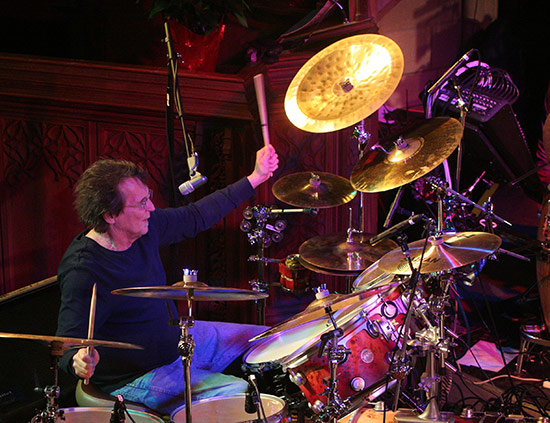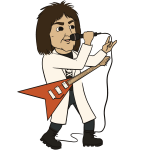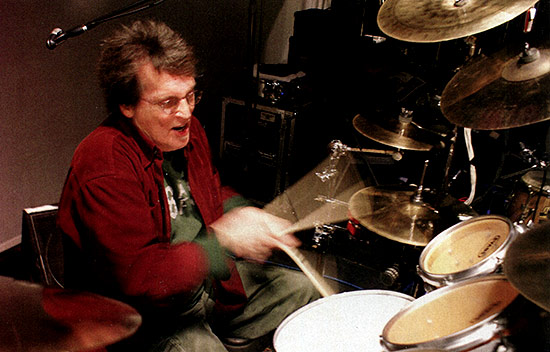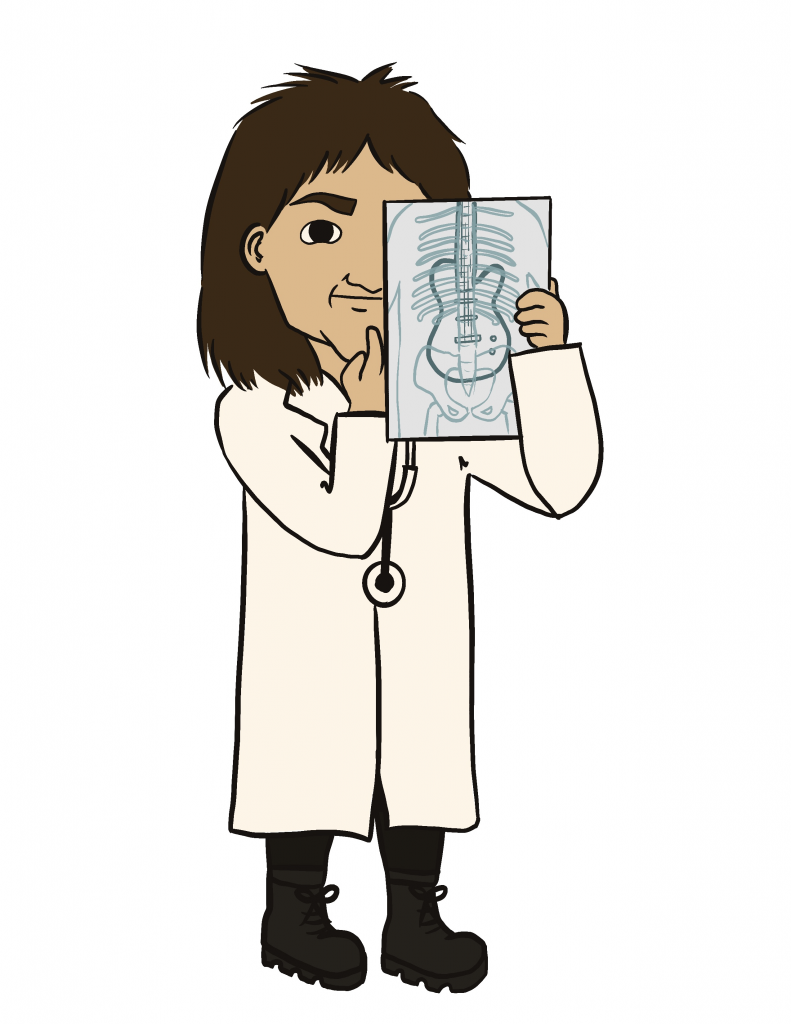Drumming Great Richie Hayward and Little Feat
February 1, 2024
No Comments
Drumming Great Richie Hayward and Little Feat

Drummer Richie Hayward (1946-2010) was one of the drumming greats of all-time. His ability to groove hard and create exciting and very musical fills and solos was a perfect for the musically adventurous Little Feat. Hayward spoke often about his approach to incorporating many musical styles. Hayward stated “My style has grown with the band. It started out heavily influenced by blues, rock ‘n’ roll, and jazz. Then it got more specific as I got into other kinds of American folk music and other roots music. I discovered New Orleans along the way, and that made a big difference: it loosened me up. I guess I’m a result of everything I’ve heard and how the band has grown in response to all our influences, which are diverse.”
Haywood thought about his musical approach in a very unique and creative way that was “outside the box.” For example he said that “One of the things I do a lot are the fills I play between my left hand and right foot, instead of breaking up the whole feel and doing a fill like it’s separate from the groove.” In this way, he never strayed away from the feel of the song and never made the drums more important that the music itself.
There is a long list of world-class drummers that considered Richie Hayward to be a truly unique drummer and a special music talent. Some of these great dummer’s that loved Richie’s playing include; Steve Gadd, Rod Morgenstein, Jim Keltner, Chad Smith, and Vinnie Colaiuta. Richie has been gone since 2010 and is still greatly missed. Besides his very successful career with Little Feat, Hayward also recorded with Robert Plant, Buddy Guy, Robert Palmer, and many others (see below). To really understand the style of Richie Hayward, let’s dive into the history of Little Feat.
Little Feat (1969-1979) (1987-present) began in Los Angeles, California when vocalist/guitarist Lowell George met keyboardist/vocalist Bill Payne. George had been playing with Frank Zappa and his Mothers of Inven- tion. George and Payne recruited bassist Roy Estrada and drummer Richie Hayward from George’s previous band, The Factory. The four musicians formed Little Feat in 1969. Lowell George had recorded a demo of his (then) signature song “Willin.” It would become inspiration for the early Little Feat sound, featuring George’s soulful vocals and slide guitar. With the help of Frank Zappa, Little Feat secured a record deal with Warner Brothers and recorded 1971’s Little Feat and 1972’s Sailin’ Shoes, both critically acclaimed but poorly selling albums.
Estrada soon left to join Captain Beefheart’s Magic Band and was replaced by bassist Kenny Gradney. Little Feat also added a second guitarist, Paul Barrere and percussionist Sam Clayton. This new lineup collectively added a New Orleans funk element heard in their 1973 release, Dixie Chicken. It was produced by Lowell George. The album captured the Little Feat sound with the songs “Dixie Chicken” and “Fat Man in the Bathtub.” Little Feat was becoming well known for their impressive live performances, but Dixie Chicken fared no better on the charts than their first two offerings. With band morale running low, Bill Payne temporarily jumped ship to join The Doobie Brothers, only to return for 1974’s Feats Don’t Fail Me Now. This album gained traction on the charts with “Oh Atlanta” and “Feats Don’t Fail Me Now.”
1975’s The Last Record Album and 1977’s Time Loves a Hero brought a new level of success to the band with songs such as “Day or Night” and “Time Loves a Hero.” However, George’s songwriting contributions were minimal because he felt Payne and Barrere were moving in too much of a jazz-fusion direction. In August of 1977, Little Feat recorded a live album from shows played at the Rainbow Theatre in London and Lisner Auditorium in Washington, DC. The result was 1978’s Waiting for Columbus, their most successful album.
Groundbreaking album Waiting for Columbus by Little Feat
Waiting for Columbus was a double live album taken from seven live performances. The band was backed by the Tower of Power horn section, whom they had previously recorded with on studio sessions. Little Feat initially wanted to release a triple album but decided to pare it down to double album length. After recording all the shows, they took selected tracks to the studio to tweak a few of the parts. Bill Payne recalled, “We went in to redo the guitars, and we redid a few vocals here and there. But for the most part, it’s a live album…Little Feat was never a band that adhered to rules all that easily…You can do whatever the hell you want. It’s a recording. It’s a picture of a place in time, but if you want to fix something, then go on and fix it! It’s still you playing it!”
Side one opened with “Join the Band,” then “Fat Man in the Bathtub,” “All That You Dream,” “Oh Atlanta,” and “Old Folks’ Boogie.” Bill Payne remembered, “‘Fat Man in the Bathtub.’ It’s amazing. The drum sounds on that are just incredible…this was a powerful, powerful record…we were always more of a live band.”
Side two opened with “Time Loves a Hero,” then “Day or Night,” “Mercenary Territory,” and “Spanish Moon.” On “Time Loves a Hero” the band stretched out and found little nuances to explore, thus showing the strength of their improvisational approach. “Day or Night” revealed Little Feat’s ability to create a funky sixteenth-note feel combined with Bill Payne’s fusion inspired keyboard comping and soloing (reminiscent of Joe Zawinul’s sound with the fusion band Weather Report).
Side three opened with “Dixie Chicken,” then “Tripe Face Boogie,” and “Rocket in My Pocket.” On “Dixie Chicken,” Payne’s southern boogie piano feel blended well with Barrere’s blues guitar. This complemented Lowell George’s down-home dixie lyrics to create the classic Little Feat sound.
Side four opened with “Willin’,” then “Don’t Bogart That Joint,” “A Apolitical Blues,” “Sailin’ Shoes,”and “Feats Don’t Fail Me Now.” “Don’t Bogart that Joint,” a crowd favorite at Little Feat shows, has an interesting background. The word “Bogart” referred to when the legendary actor Humphrey Bogart would let a cigarette dangle from the corner of his mouth. Not surprisingly, this song and its cannabis reference were also performed often by The Grateful Dead and the band Phish.
Three of the unused tracks from Waiting for Columbus were included on Little Feat’s 1981 album Hoy-Hoy! Waiting for Columbus proved that even in a state of rapid decline (internal tension), Little Feat was a force to hear in live performance with their ability to take their music in so many different directions. Waiting for Columbus ranks as one of the great live albums in rock music history.
Lowell George’s health and interest in the band were rapidly declining and he walked out on the recording sessions for Little Feat’s next album. George was particularly upset with Bill Payne’s jazz/fusion approach. He was intent on reforming Little Feat at a later date without Payne or Barrere. George went on to release a solo album, Thanks, I’ll Eat It Here, in 1979. However, while on tour to support the album, Lowell George tragically died of a heart attack.
Little Feat went on to finish and release 1979’s Down on the Farm before disbanding. A retrospective double album of rare outtakes and live tracks titled Hoy Hoy! was released in 1981. Little Feats’ ex-members became popular session musicians with many artists vying for their services. Richie Hayward played on Robert Plant’s 1985 Shaken ‘n’ Stirred, and Bill Payne played with a variety of artist that included; The Doobie Brothers, Pink Floyd, Emmylou Harris, James Taylor, and many more.
Little Feat re-formed with the surviving members adding ex-Pure Prairie League guitarist/vocalist Craig Fuller and guitarist Fred Tackett. They recorded the commercially successful Let It Roll in 1988. However, 1990’s Representing the Mambo was too jazz-rock for Warner Brothers, who dropped them from the label. Craig Fuller left after 1991’s Shake Me Up and was replaced by vocalist Shaun Murphy in 1993.
Southern rock lost a great drummer when Richie Hayward died in 2010. Little Feat went on to record many more studio albums including 2012’s Rooster Rag. Little Feat was one of the most under-rated bands in rock music history. A wildly eclectic mix of styles from; southern boogie, swampy New Orleans funk, jazz, fusion, country, blues, R&B, and rock ‘n’ roll combined with Little Feat’s highly melodic songwriting to provide their music with great depth. The fans that heard Little Feat perform live were consistently treated to their gifted musicianship and instrumental virtuosity. A long list of prominent musicians that continue to play their music includes; Jackson Browne, Bob Dylan, Carly Simon, Van Halen, Bob Weir, Phil Lesh, Gov’t Mule, Bonnie Raitt, and many more. Little Feat continues to be a hugely popular fixture on the live jam band scene.
Sources cited:
Rock History- The Musician’s Perspective. by Robert Brosh
Richie Hayward Interview. Modern Drummer Magazine, October 1995.



